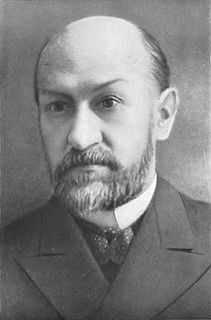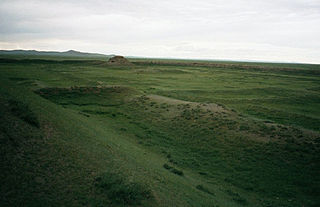This page is based on this
Wikipedia article Text is available under the
CC BY-SA 4.0 license; additional terms may apply.
Images, videos and audio are available under their respective licenses.

Shirvan, also spelled as Sharvān, Shirwan, Shervan, Sherwan and Šervān, is a historical region in the eastern Caucasus, known by this name in both Islamic and modern times. Today, the region is an industrially and agriculturally developed part of the Azerbaijan Republic that stretches between the western shores of the Caspian Sea and the Kura River, centered on the Shirvan Plain.

Astara is a city and capital of Astara County, Gilan Province, Iran. It lies on the border with Azerbaijan Republic and on the Caspian Sea. It is a relatively important border trade center between Iran and the Caucasus.

The Tat language or Tat/Tati Persian or Tati is a Southwestern Iranian language related to, but not fully mutually intelligible with Persian and spoken by the Tats in Azerbaijan and Russia. There is also an Iranian language called Judeo-Tat spoken by Jews of Caucasus.
The Ḥudūd al-ʿĀlam is a 10th-century geography book written in Persian by an unknown author from Jowzjan. The title in full is حدود العالم من المشرق الی المغرب.

Vasily Vladimirovich Bartold was a Russian Empire and Soviet historian of German descent who specialized in the history of Islam and the Turkic peoples (Turkology).

Naqadeh, also known as Naghadeh, Naghdeh and Nagadeh, is a city in and the capital of Naqadeh County, West Azerbaijan Province, Iran. At the 1996 census, its population was 110,257, in 20,781 families.

The Shaddadids were a Muslim dynasty of Kurdish origin who ruled in various parts of Armenia and Arran from 951 to 1174 AD. They were established in Dvin. Through their long tenure in Armenia, they often intermarried with the Bagratuni royal family of Armenia.

Tsanareti was a historic district (Khevi) in the early medieval Caucasus, lying chiefly in what is now the northeastern corner in Georgia’s region of Mtskheta-Mtianeti.

Ordu-Baliq, also known as Mubalik and Karabalghasun, was the capital of the first Uyghur Khaganate. It was built on the site of the former Göktürk imperial capital, 27 km north-to-northwest of the later Mongol capital, Karakorum. Its ruins are known as Kharbalgas in Mongolian meaning "black city". They form part of the World Heritage Site Orkhon Valley Cultural Landscape.

Rawwadid or Ravvadid or Banū Rawwād (955–1071), was a Muslim ruling family centered in historic Azerbaijan between the late 8th and early 13th centuries.
Anushirvan ibn Lashkari was the son and successor of Lashkari ibn Musa and briefly the seventh emir of the Shaddadids at Ganja in 1049.

Abu'l-Aswar or Abu'l-Asvar Shavur ibn Fadl ibn Muhammad ibn Shaddad was a member of the Shaddadid dynasty. Between 1049 and 1067 he was the eighth Shaddadid ruler of Arran from Ganja. Prior to that, he ruled the city of Dvin from 1022 as an autonomous lord. A capable warrior, and a wise and cunning ruler, Abu'l-Aswar was engaged in several conflicts with most of his neighbours. During his rule over Dvin, he was mostly involved in the affairs of the Armenian principalities. He collaborated with the Byzantine Empire in its conquest of the last remnants of Bagratid Armenia in 1045, but when the Byzantines later turned on him, he survived three successive offensives that sought to take Ganja. In 1049, a revolt in Ganja overthrew his infant great-great-nephew, Anurshirvan. The rebels invited him to take up the family's emirate, and he moved from Dvin to Ganja. Under his rule, the Shaddadid dynasty reached its zenith. He undertook successful campaigns into Georgia and Shirvan, although the limits of Shaddadid power were exposed by his failure to take over the Emirate of Tiflis and by devastating raids by the Alans. At the same time, his reign witnessed the rapid rise of the Seljuk Empire and the extension of its control over the Transcaucasian principalities. Abu'l-Aswar became a Seljuk vassal in 1054/5. Although he gained control over the former Armenian capital of Ani through Seljuk patronage in 1065, this association also paved the way for the dynasty's decline after his death in November 1067.

The Justanids or Jostanids were the rulers of a part of Daylam from 791 to the late 11th-century.
Manuchehr I was the eleventh Shah of Shirvan. He is considered to be first fully Persianized ruler of the dynasty, rejecting Arab roots and regarding himself as a descendant of the Sasanians.
Sallar was the fifteenth Shah of Shirvan. He was the uncle and successor of Ali III. Sallar was married to an unnamed daughter of Abu-l-Aswar Shavur I bin al-Fadl I.

Fariburz ibn Sallar, better simply known as Fariburz I (فریبرز), was the sixteenth Shah of Shirvan, ruling from 1063 to 1096. His reign saw many major political balance changes in Caucasus, including expansion by the Seljuqs. He was considered a ruler with great diplomatic skills, and his kingdom extended from Mughan to Kumuk and Alania.
Afridun the Martyr was the eighteenth Shah of Shirvan. He was appointed governor of Derbent several times during his father's reign.












